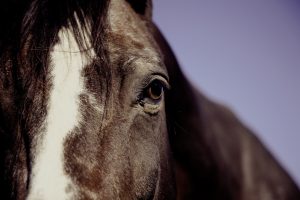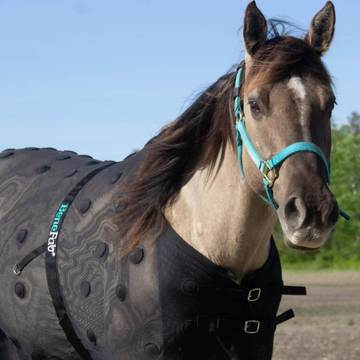One of the common eye conditions seen in horses, especially during the summer months, is Conjunctivitis, or Pinkeye. Conjunctivitis occurs when the pink lining of the eyelids (the conjunctiva) become inflamed. This common infection can be characterized by inflammation, redness, and a watery discharge of the eye. It arises when the tissue around the eye is damaged, normally because of trauma, leaving it vulnerable to be attacked by bacteria.

What causes Pinkeye?
- Allergic reaction
- Inflammation
- Environmental irritants
- Parasites
- Result of damage to the eye
- Lack of insufficient tear production
- Abnormally shaped eyelids
- Face flies or insect bites.
Pinkeye may also be due to several factors such as a dusty environment, an illness, or a viral or/and bacterial organism infecting the eye. The first thing you may notice is watery discharge. If the eye is producing a lot of tears, they will start to run down the horse’s face, and the dried secretions will be blackish and crusty. Since it can affect one or both eyes and lead to more serious conditions, Pinkeye should be given immediate attention if it does not clear up quickly with a recommended saline solution flushing treatment.
What are some signs that I can look for?
- Redness of the eye
- Discharge that is clear, yellow, or with mucus
- Irritated eyelids
- Closed eyelids or squinting
- Reaction to bright light
- Head shaking
So, what happens if a Saline Solution flushing treatment is ineffective at clearing up the infection? In this case, it may be necessary for a veterinarian to flush the nasolacrimal (tear) duct or give a topical antibiotic ointment steroid or cream. Since some causes of this eye disease are infectious, it is always good to practice not sharing items, such as grooming tools and feeding buckets. In addition, using a good mesh fly mask will help protect your horse’s eyes. For your best chance at avoiding Pinkeye, help prevent the infection by keeping your horse clean and in a well-ventilated area.
Every week we like to make your life easier by delivering you expert information, along with good deals on helpful products for your daily life. To help you prevent Pinkeye, we went ahead and found these great and affordable fly masks on SmartPak to help your horse, check them out >>>
here!






















